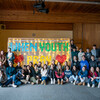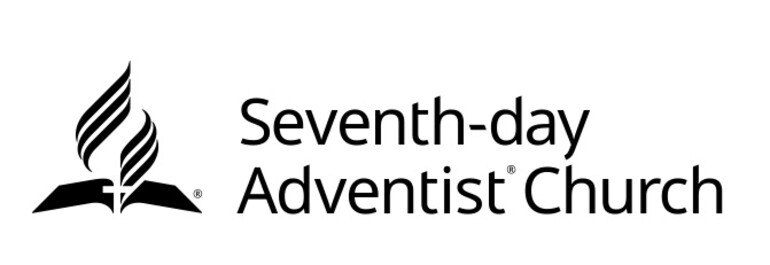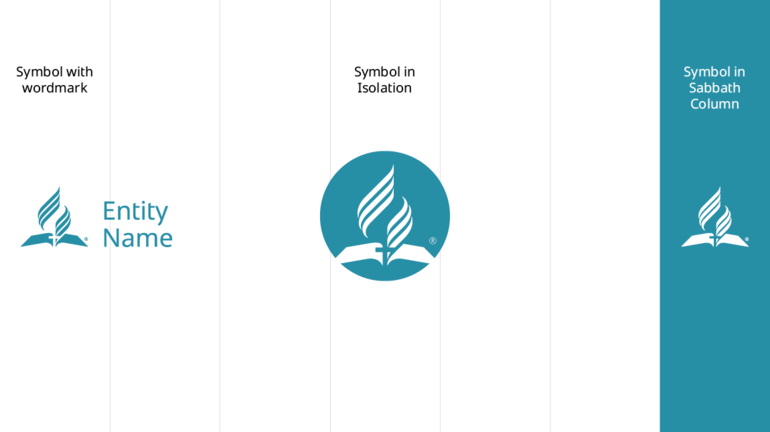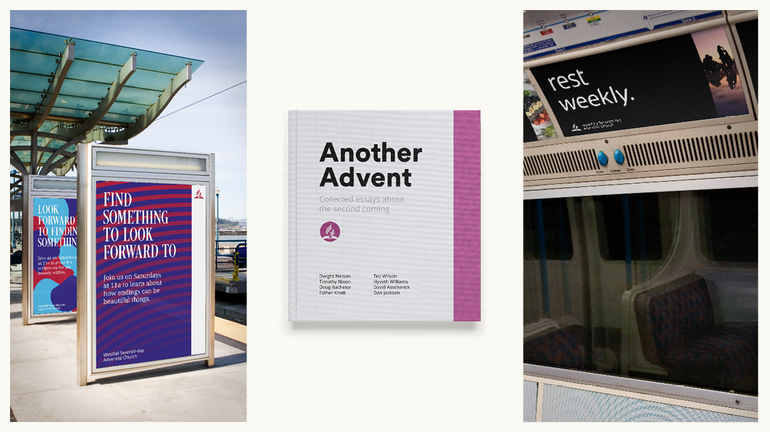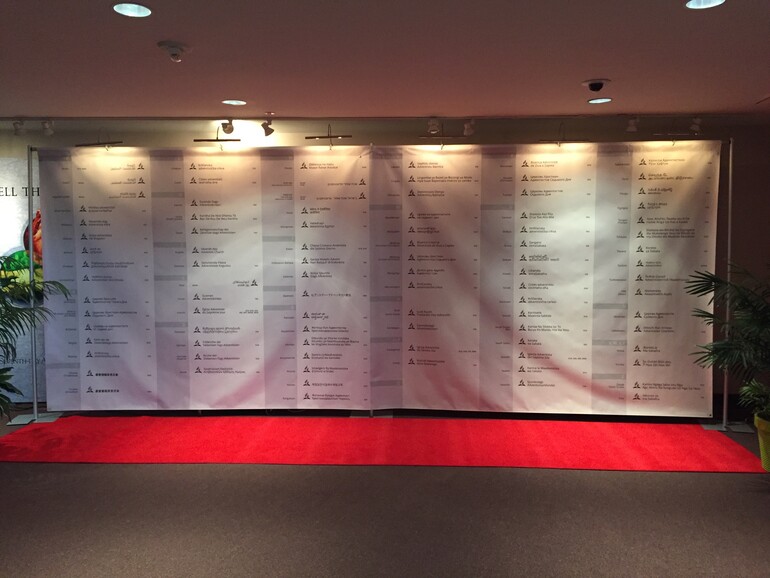During the annual Seventh-day Adventist world church spring executive committee meeting on April 11, in Silver Spring, Md., members voted to adopt a new identity guideline system for global use.
With the Adventist Church operating in more than 200 countires and territories around the world, and worshiping in more than 900 languages, a cohesivie visual identity was challenging but something church administrators and leaders were eager to accomplish.
The changes to the Adventist logo are reflected in a new font, slight modifications to the Adventist symbol and a new color scheme.
The type style has changed from serif to sans serif, using a new font, "Adventist Sans." This new font, which has already been adapted for 91 languages, will eventually allow for consistency in every language group where the church is present.
The modifications to the Adventist symbol include slight tweaks to the angle of the Bible to more directly align to the angle of the flames, and greater definition of the cross. These changes were initally presented at the Oct. 11, 2016 world church Annual Council meeting.
The Adventist symbol includes the flame, representing the three angels in Revelation 14; the cross, symboling Christ's salvation and sacrifice; the open Bible, which represents the biblical foundation of Adventist beliefs; and the second coming, with upward-pointing lines symbolizing the resurrection and ascension to heaven at Christ's second coming, the ultimate focus of Adventist faith.
The new color scheme for the logo allows for creativity and culturially appropriate colors for use around the world. Local church entities and leaders can choose what works best for their region.
Additionally, the identity system includes a new preferred layout structure for all visual projects: the Creation Grid.
The Creation Grid is a design template that consists of seven columns, representing the importantance of creation and the 7th day Sabbath. It allows designers to do whatever they want in the first six columns of their design. However, the seventh, known as the Sabbath column, is specifically designed to be distinct from the rest of the six.
The goal is to have a visually united branding which appropriately highlights the Adventist mission in every language.
The guidelines will continue to dyamically adopt changes in technology, with updates periodically included on the new identity guideline website: identity.adventist.org.
Video Presentation
The Vote
The recommendation, voted by the world church executive committee, reads as follows:
- To adopt the Advent Sans type system for global use in all Seventh-day Adventist identifiers; and
- To adopt principle-base color guidelines for global use, allowing local designers to choose culturally appropriate color schemes; and
- To adopt the Creation Grid as the preferred layout structure for all visual projects; and
- To adopt the more comprehensive and dynamic identity guideline system (http://identity.adventist.org) which will continue to adapt to new developments in technology and communication; and
- To establish the [General Conference] GC Communication Department as the managing body of the identity guideline system.
Questions & Answers
It should be noted that the North American Division (NAD) is working on guidelines to help division entities productively and clearly adapt identity principles to their individual needs. More information from the division should be forthcoming within the next few months. The Gleaner staff video chatted with world church communication leaders after the vote for additional information of interest to church leaders, pastors and members, reflected in the following Q & A.
Q: How do these new guidelines work if our church or ministriy has its own logo?
A: The Creation Grid helps to connect our world church identity with local identitiy. However, the ultimate goal is to have one logo. Examples can be seen on the Application page on the identity website, specifically shown on the business card examples.
Q: For churches that are in the process of redesigning logos, bulletins and other material, should they be implementing the new identity guidelines and Creation Grid?
A: Yes. The ultimate goal is to have one cohesive visual identity that specifically incorporates our Adventist beliefs and aids us in accomplishing our mission.
Q: Is everybody required to make changes now?
A: No, it does not mean you have to change immediately, but rather to help you plan ahead. If your supply of bulletins or business cards are getting low, or if your sign is needing repair, then please consider using the new guidelines.
Q: What will happen with legacy identity materials?
A: These guidelines are intended to provide a directive for future materials, and do not invalidate existing materials. The principle-based nature of the system allows legacy materials to exist in harmony while entities transition over. It also allows this new system to roll out without creating noticeable visual dissonance. All official entities should use the new identity system on new projects, and may transition or redesign legacy materials or items as convenient.
Q: How does the new logo work with languages that read right-to-left (i.e. Arabic, Hebrew and Persian) and top-to-bottom right-to-left (i.e. Chinese, Japanese and Korean)?
A: The new identity guidelines work for all languages and writing/reading directions. Specific examples for each language can be see on the identity guideline website.
Q: Will there be more templates and examples of actual use in the "wild," such as signage and social media?
A: Yes. Examples of signage and other uses are forthcoming in the following weeks. These will be made available on the identity guideline website.
Q: Where can I find more information and continued updates?
A: Updates will be made on the new identity guideline website: https://identity.adventist.org. Also, click here sign-up for emails notifying you when new templates and changes become available.
